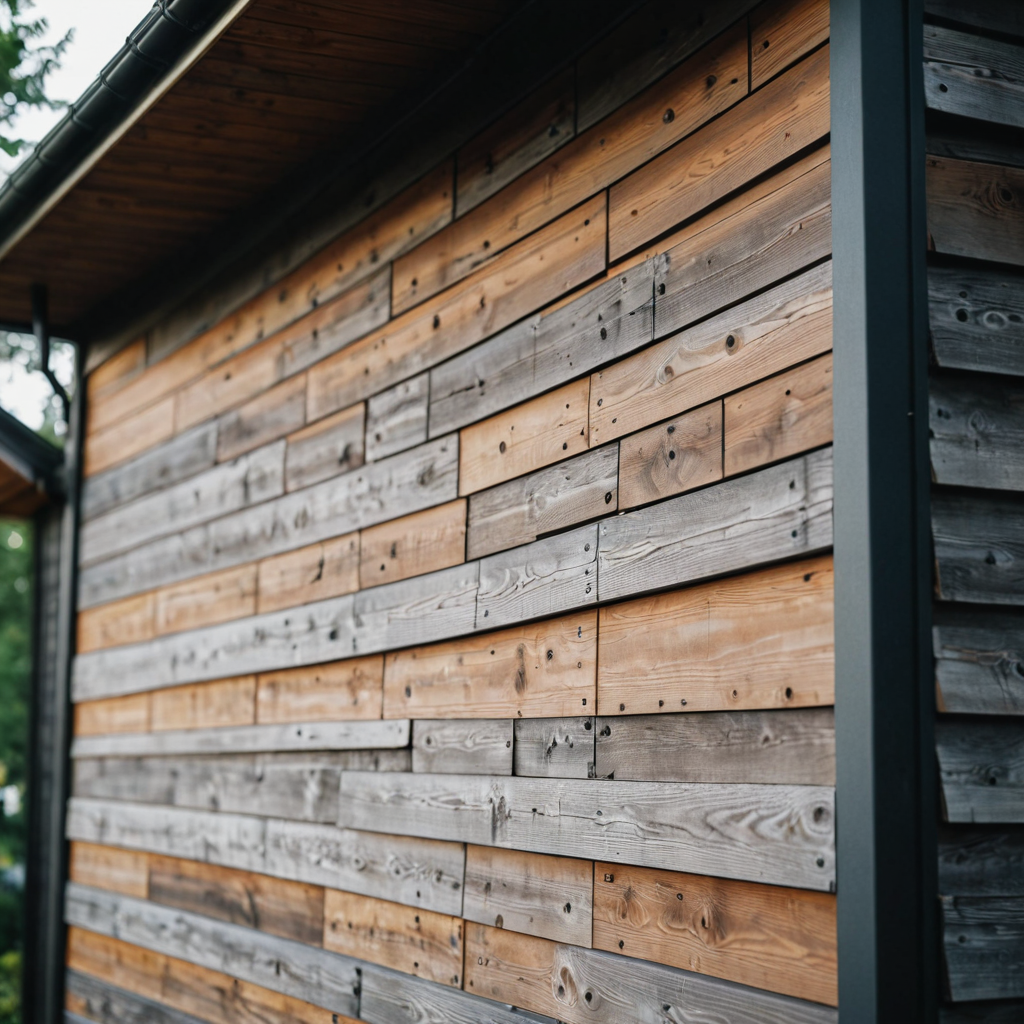
The exterior siding of your home not only enhances its curb appeal but also provides protection against the elements, insulation, and structural support. Choosing the right type of house siding is essential for maintaining the aesthetics, durability, and energy efficiency of your property. With a wide range of siding materials available on the market, understanding the characteristics, benefits, and considerations of each type can help you make an informed decision that suits your architectural style, budget, and maintenance preferences. In this article, we will explore different types of house siding options and provide insights on selecting the most suitable option for your residential property.
Types of House Siding Materials:
1. Vinyl Siding: Vinyl siding is a popular and cost-effective siding material known for its durability, low maintenance, and versatility. It comes in a variety of colors, textures, and styles, offering fade resistance, weather resistance, and easy installation. Vinyl siding is a practical choice for homeowners seeking an affordable and long-lasting siding solution with minimal upkeep requirements.
2. Fiber Cement Siding: Fiber cement siding is a composite material made from cement, sand, and cellulose fibers, providing a durable, fire-resistant, and low-maintenance siding option. It mimics the look of wood, stucco, or stone siding and offers excellent weather resistance, insect resistance, and paint retention. Fiber cement siding is suitable for a wide range of architectural styles and climates.
3. Wood Siding: Wood siding, such as cedar, pine, or redwood, offers a natural, rustic aesthetic and timeless appeal for traditional and contemporary homes. It provides insulation, durability, and customization options, allowing for various finishes, stains, and textures. Wood siding requires regular maintenance, including staining, painting, and sealing, to protect against moisture, rot, and insect damage.
4. Aluminum Siding: Aluminum siding is a lightweight, durable, and corrosion-resistant siding material that offers longevity, color retention, and design flexibility. It comes in horizontal or vertical panels, providing a sleek, modern look for residential properties. Aluminum siding requires minimal maintenance and is suitable for coastal areas or regions with high humidity.
5. Engineered Wood Siding: Engineered wood siding is a composite material made from wood fibers, resin, and wax, offering the natural beauty of wood with enhanced durability and moisture resistance. It is available in various profiles, textures, and finishes, resembling traditional wood siding but with improved performance and longevity. Engineered wood siding is a sustainable and low-maintenance alternative to natural wood siding.
6. Stucco Siding: Stucco siding is a traditional and durable siding material made from cement, sand, and lime, providing a smooth, textured finish for exterior walls. It offers excellent fire resistance, thermal insulation, and noise reduction properties, making it a popular choice for Mediterranean, Spanish, or Southwestern-style homes. Stucco siding requires professional installation and periodic maintenance to ensure longevity and performance.
Choosing the Best House Siding for Your Needs:
1. Consider Aesthetics and Architectural Style: Select a siding material that complements the architectural style, color scheme, and design elements of your home. Choose siding options that enhance curb appeal, reflect your personal taste, and blend harmoniously with the surrounding environment.
2. Evaluate Durability and Maintenance: Assess the durability, maintenance requirements, and longevity of different siding materials to determine the best fit for your lifestyle and budget. Consider factors such as weather resistance, insect resistance, rot resistance, and ease of upkeep when selecting a siding option.
3. Compare Cost and Value: Compare the initial cost, installation expenses, and long-term value of various siding materials to make a cost-effective investment for your property. Factor in energy efficiency, insulation benefits, and potential resale value when evaluating the overall value of different siding options.
4. Consult with Siding Professionals: Seek advice from siding contractors, architects, or building professionals to evaluate your siding needs, recommend suitable materials, and ensure proper installation. Professional guidance can help you select the best siding solution for your home and achieve a durable, attractive, and well-protected exterior that enhances the overall appeal and value of your property.
In conclusion, exploring different types of house siding materials and considering factors such as aesthetics, durability, maintenance, cost, and professional advice can help you choose the best option for your residential property. Whether you opt for vinyl, fiber cement, wood, aluminum, engineered wood, or stucco siding, selecting the right siding material based on your preferences and requirements can enhance the beauty, functionality, and longevity of your home’s exterior. Invest in quality siding that complements your architectural style, withstands environmental challenges, and adds value to your property for years to come.
